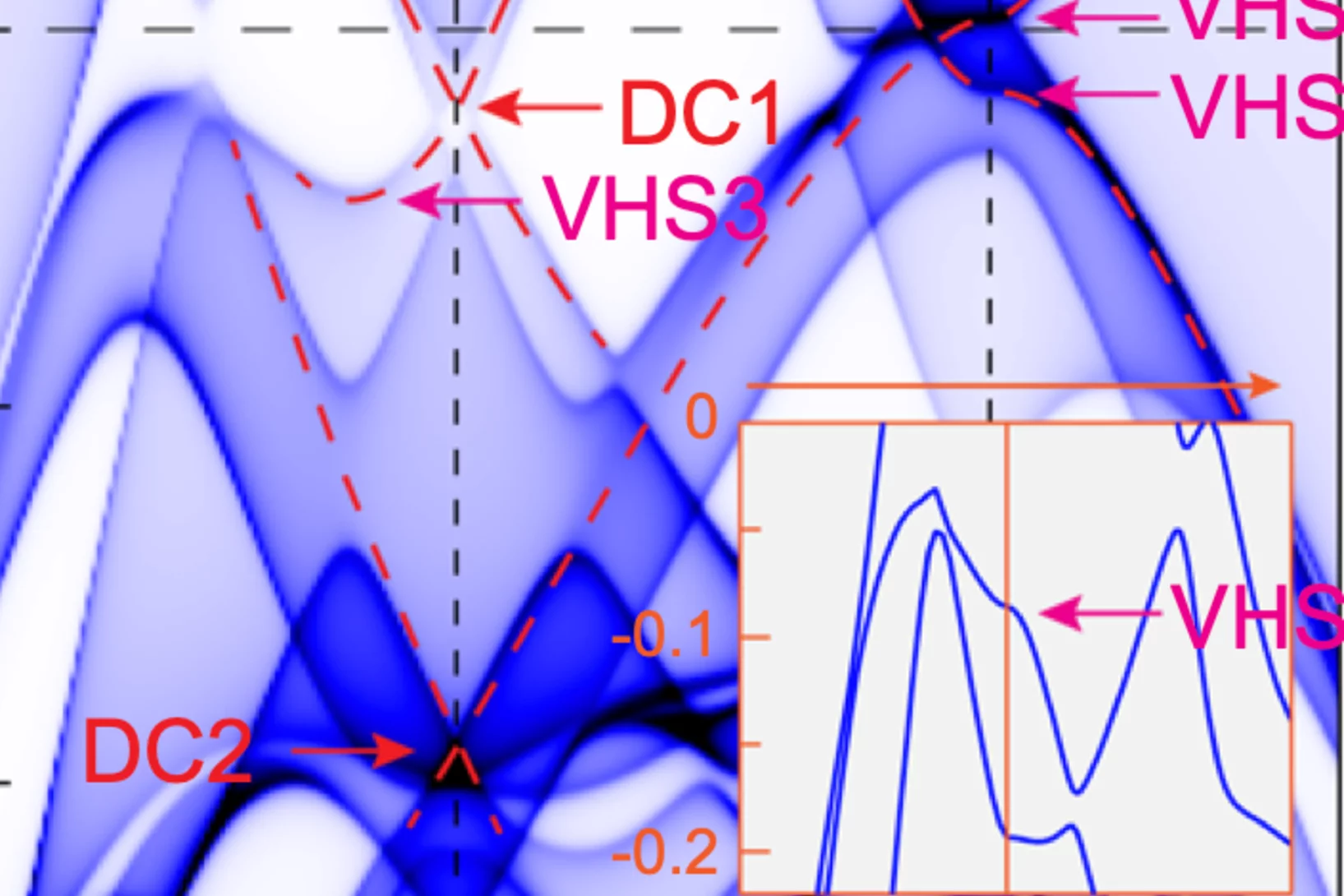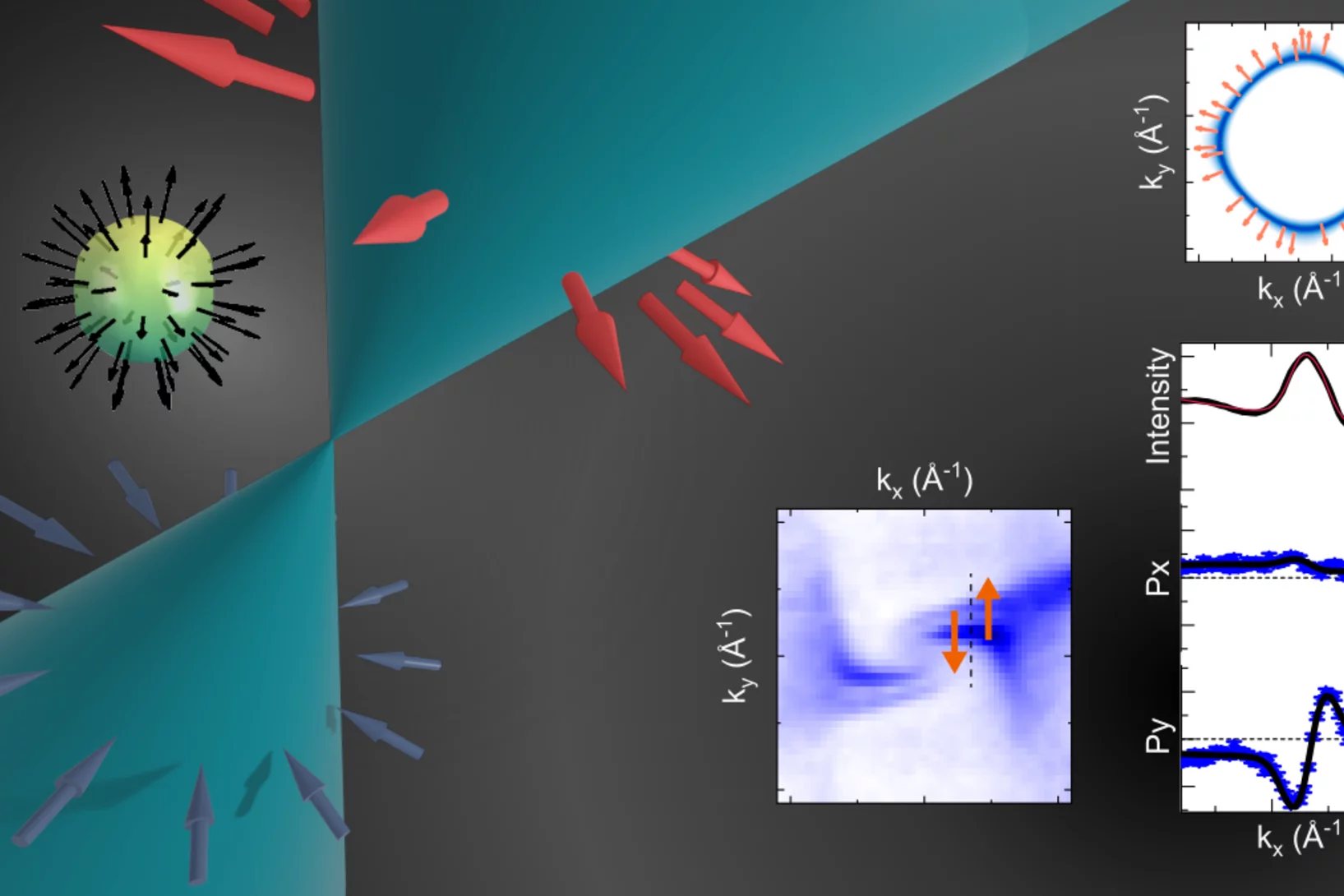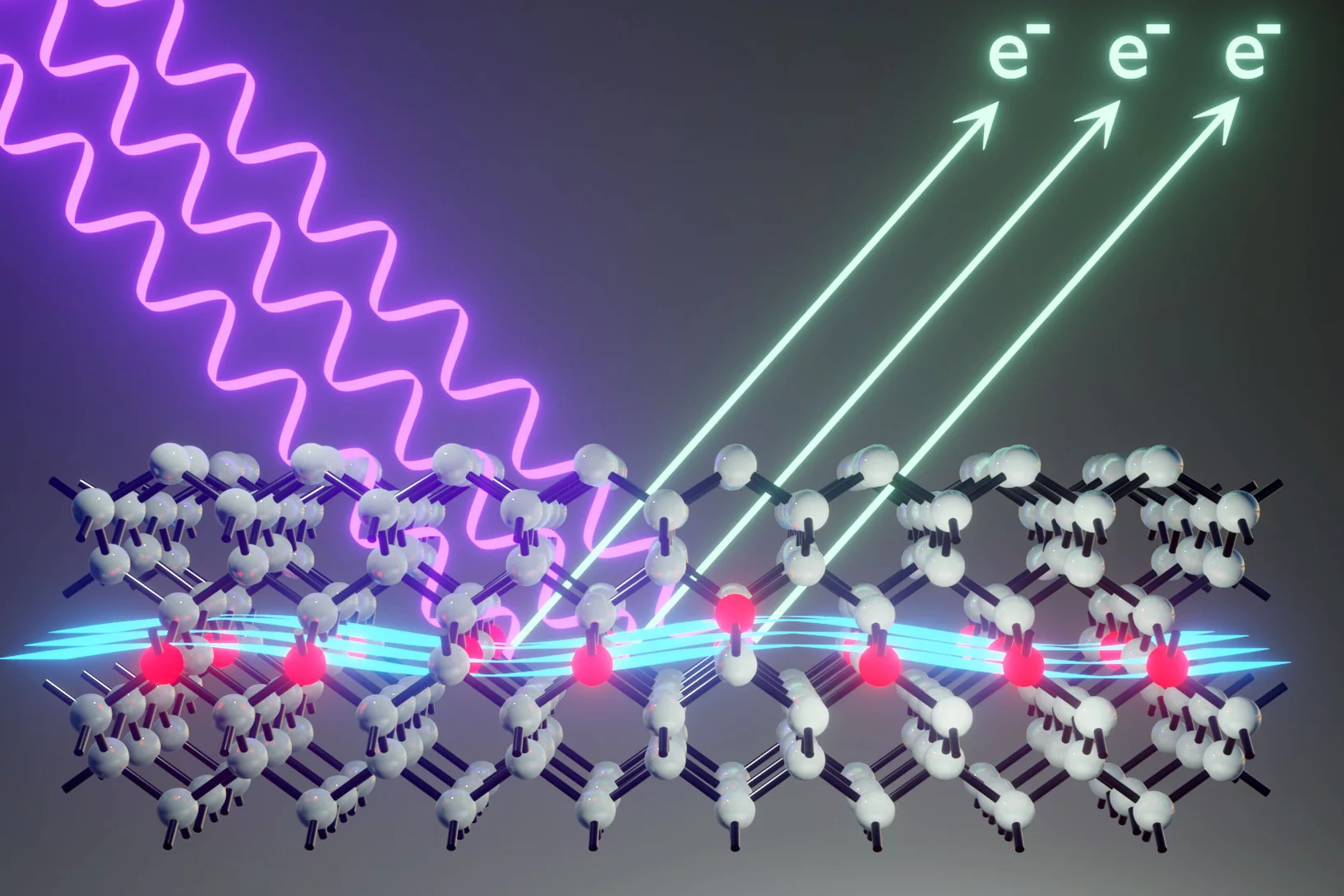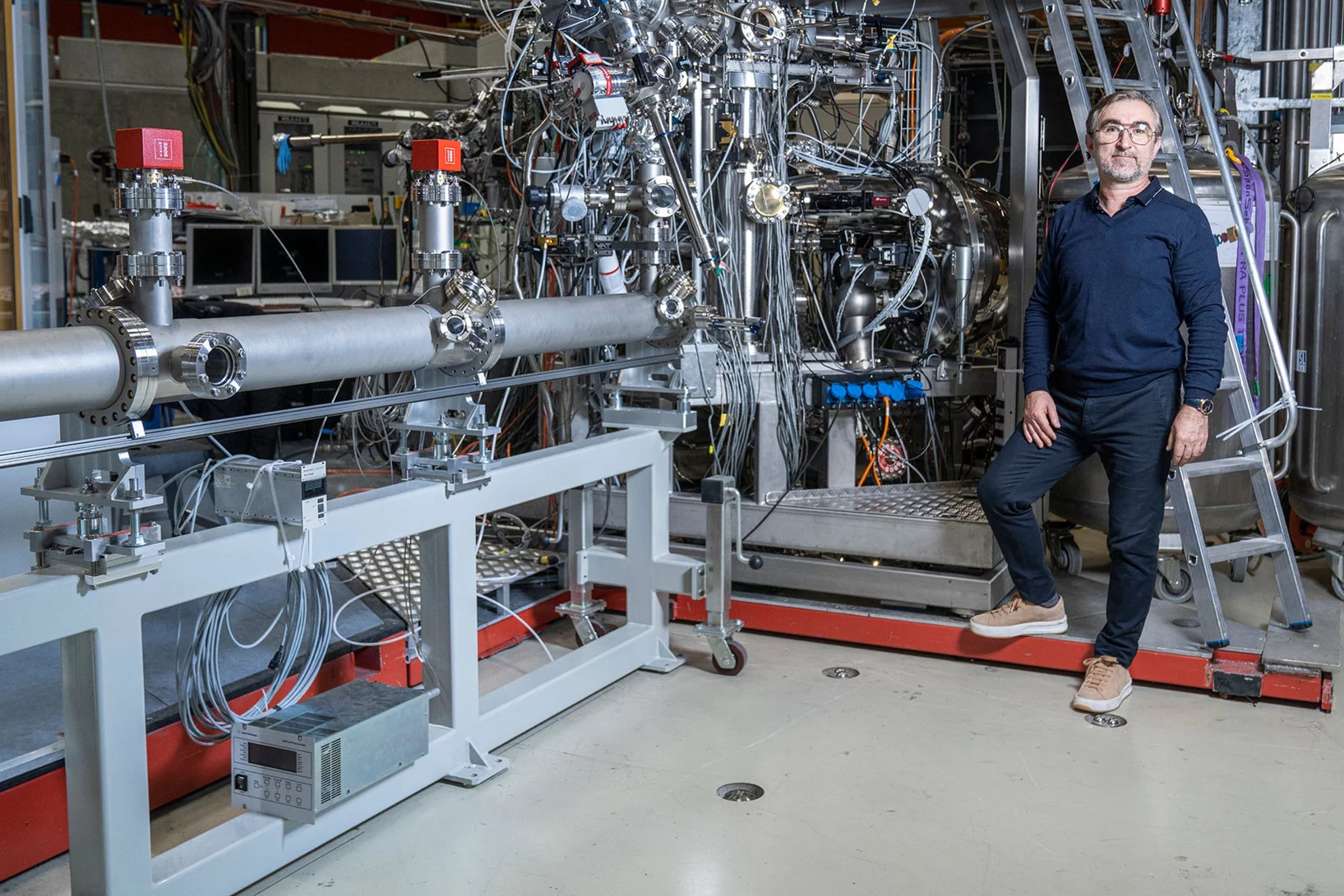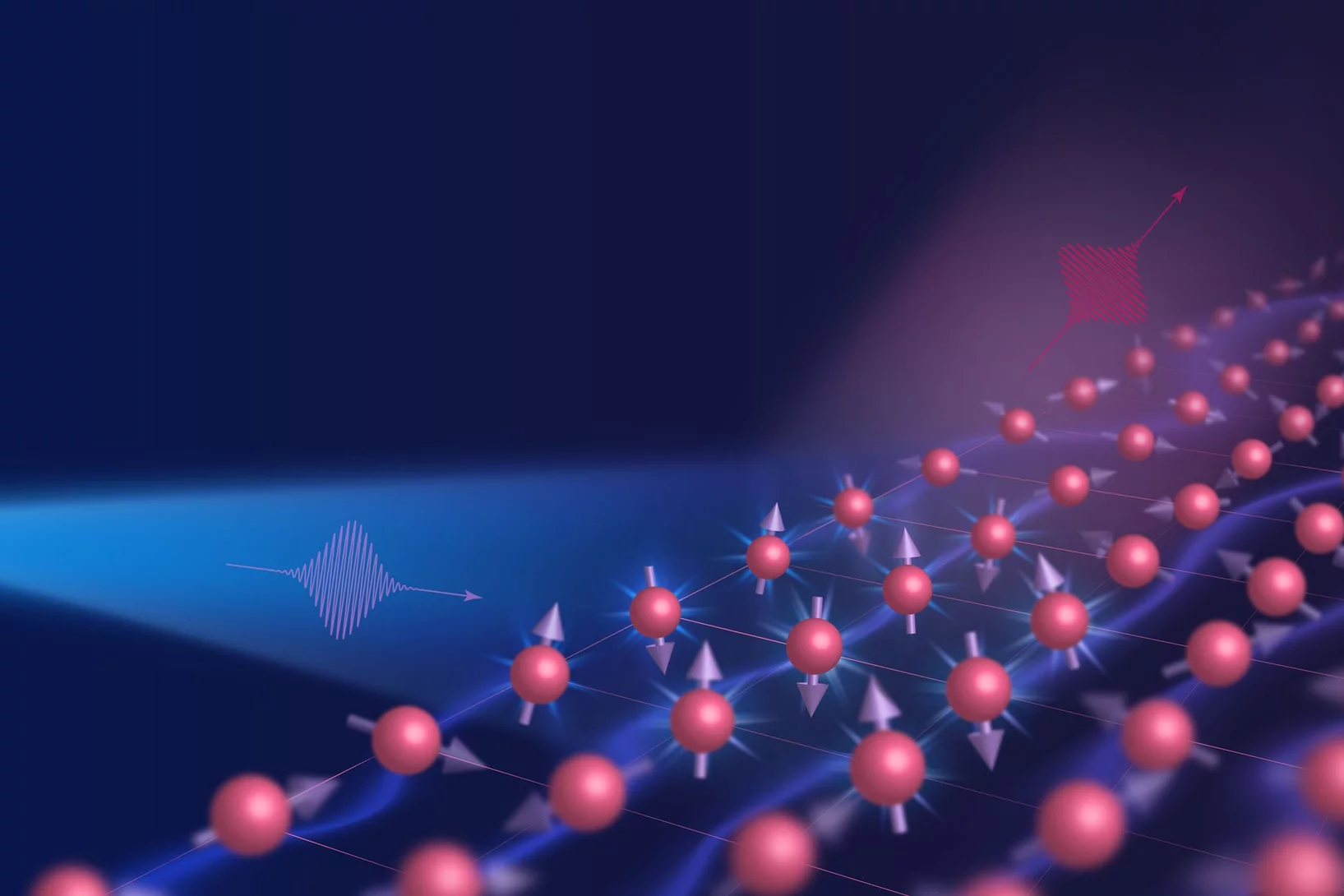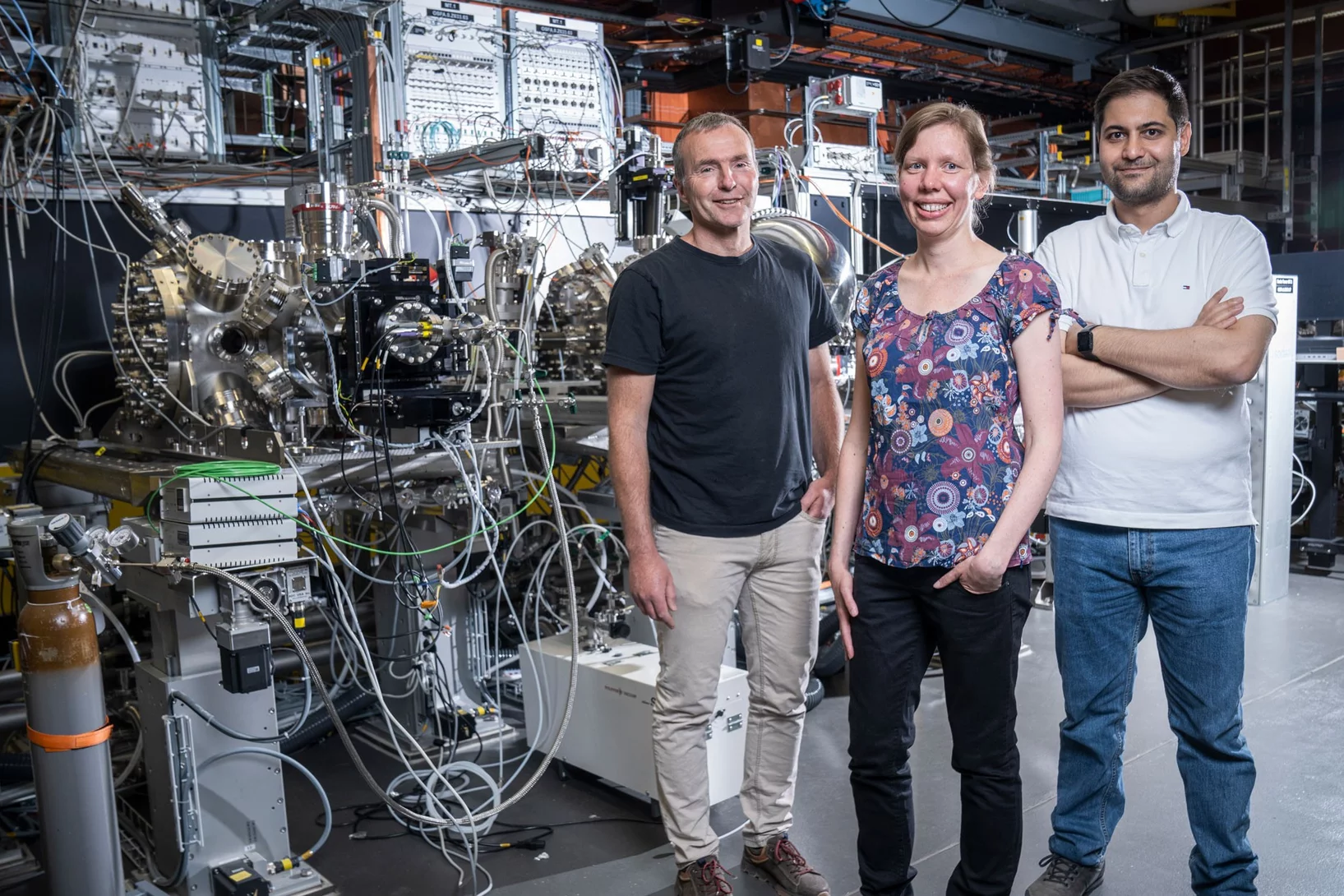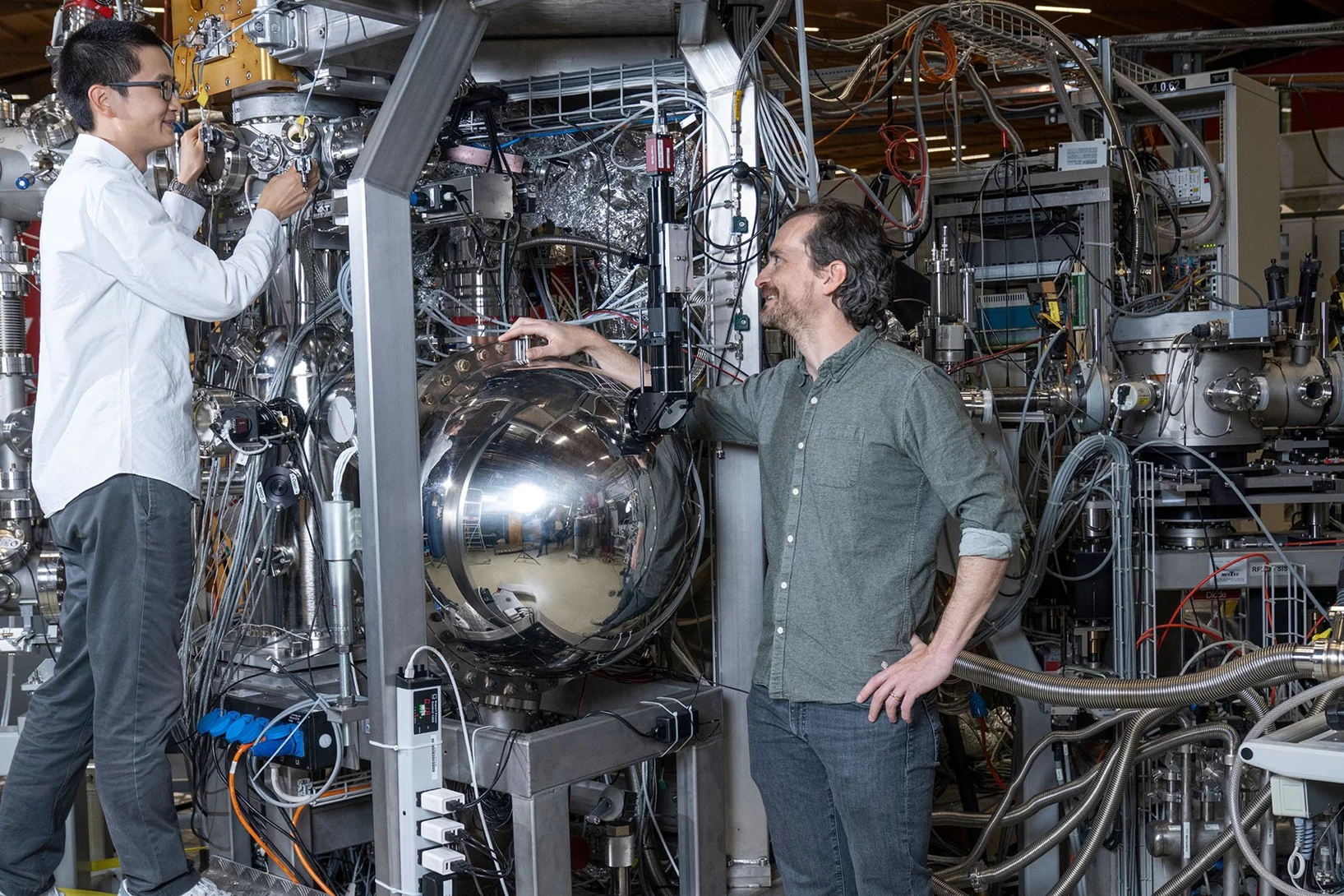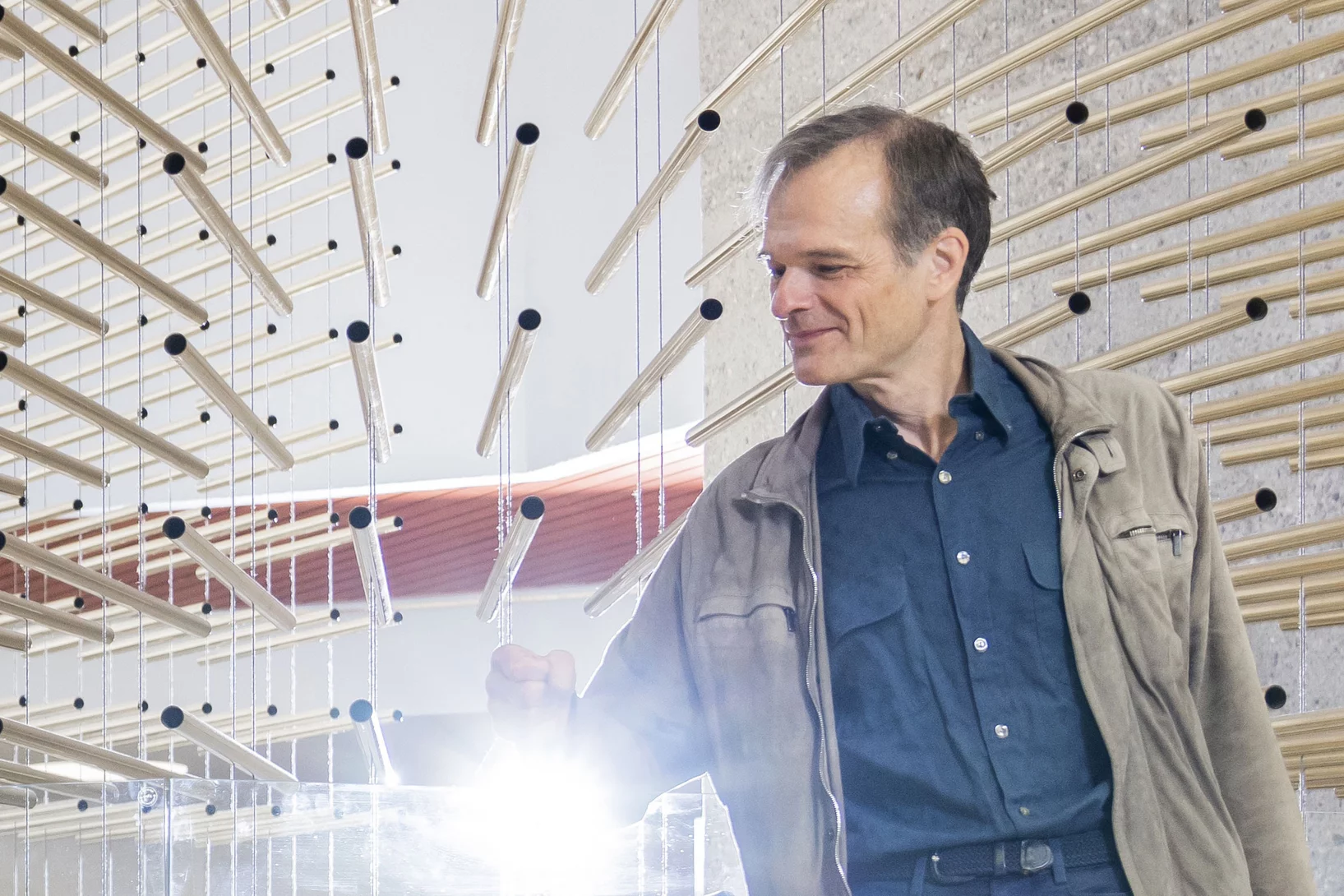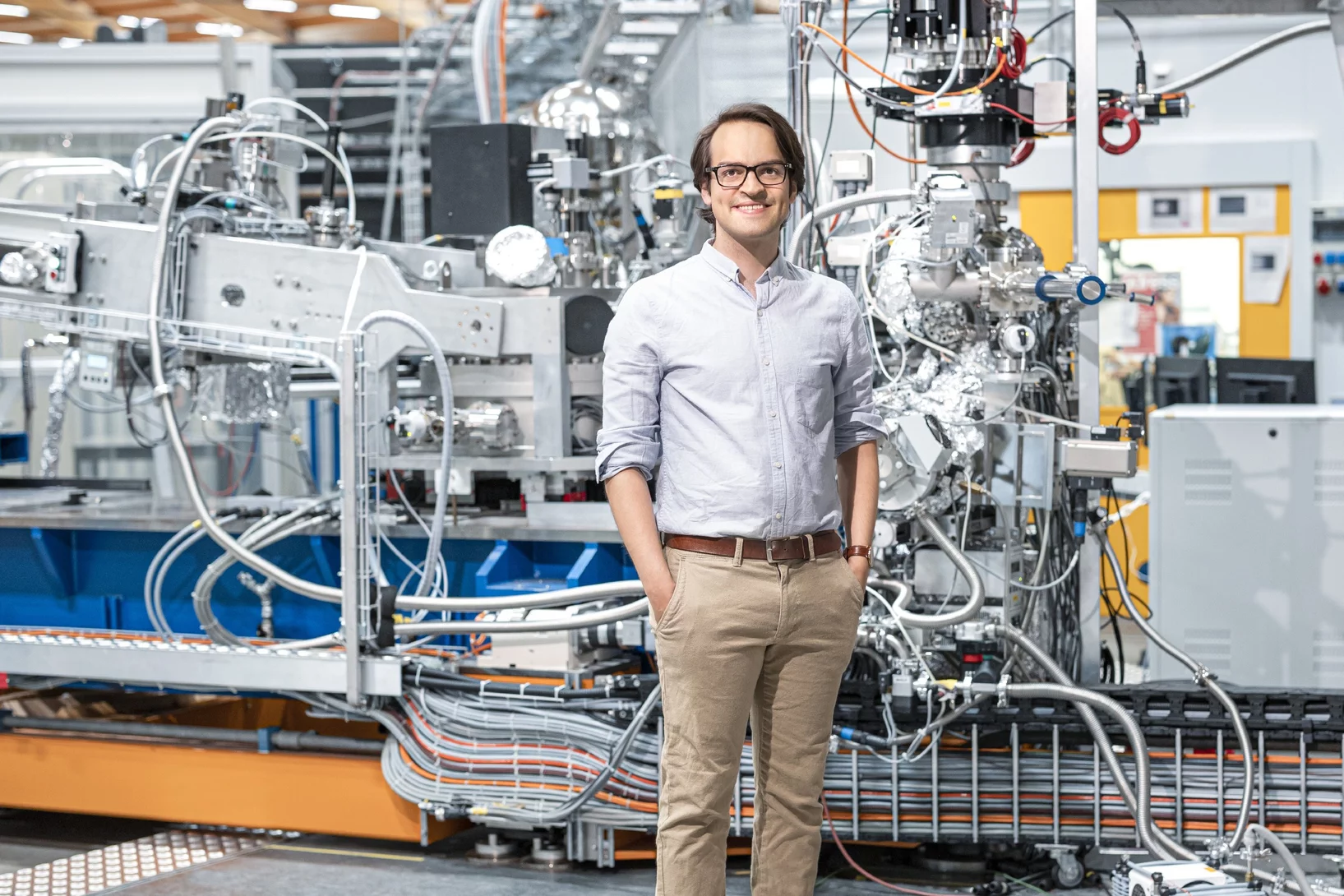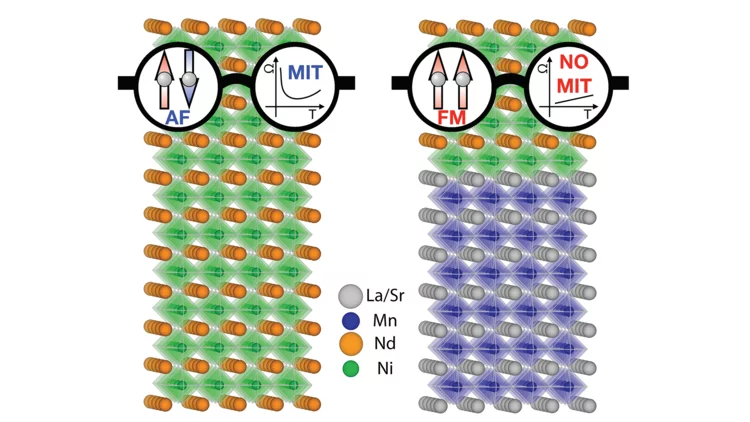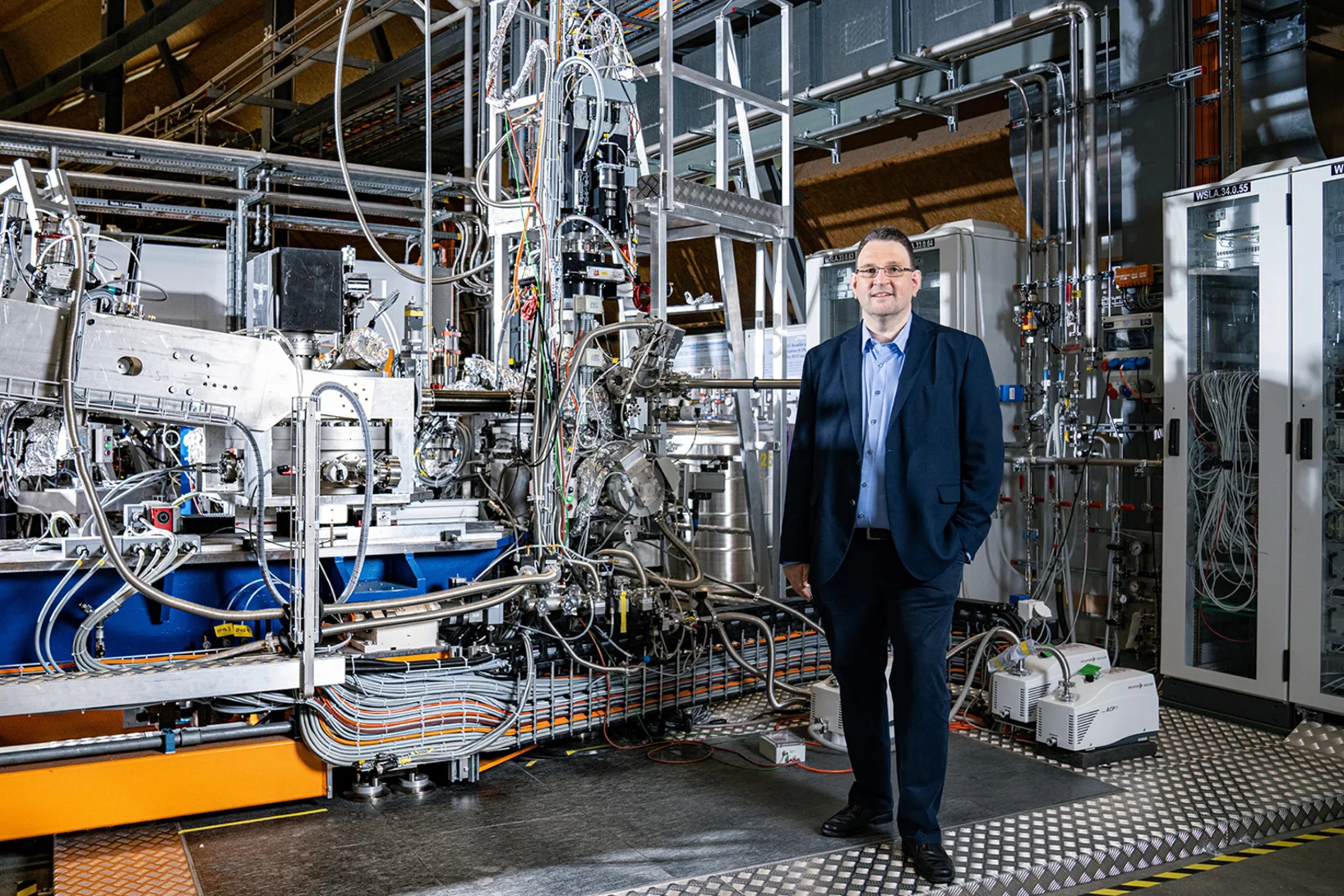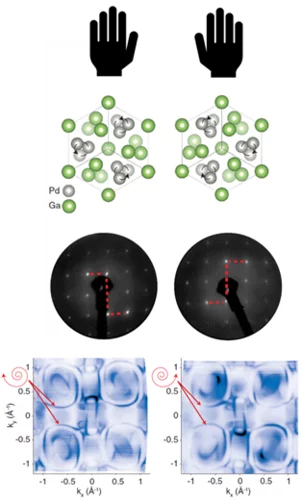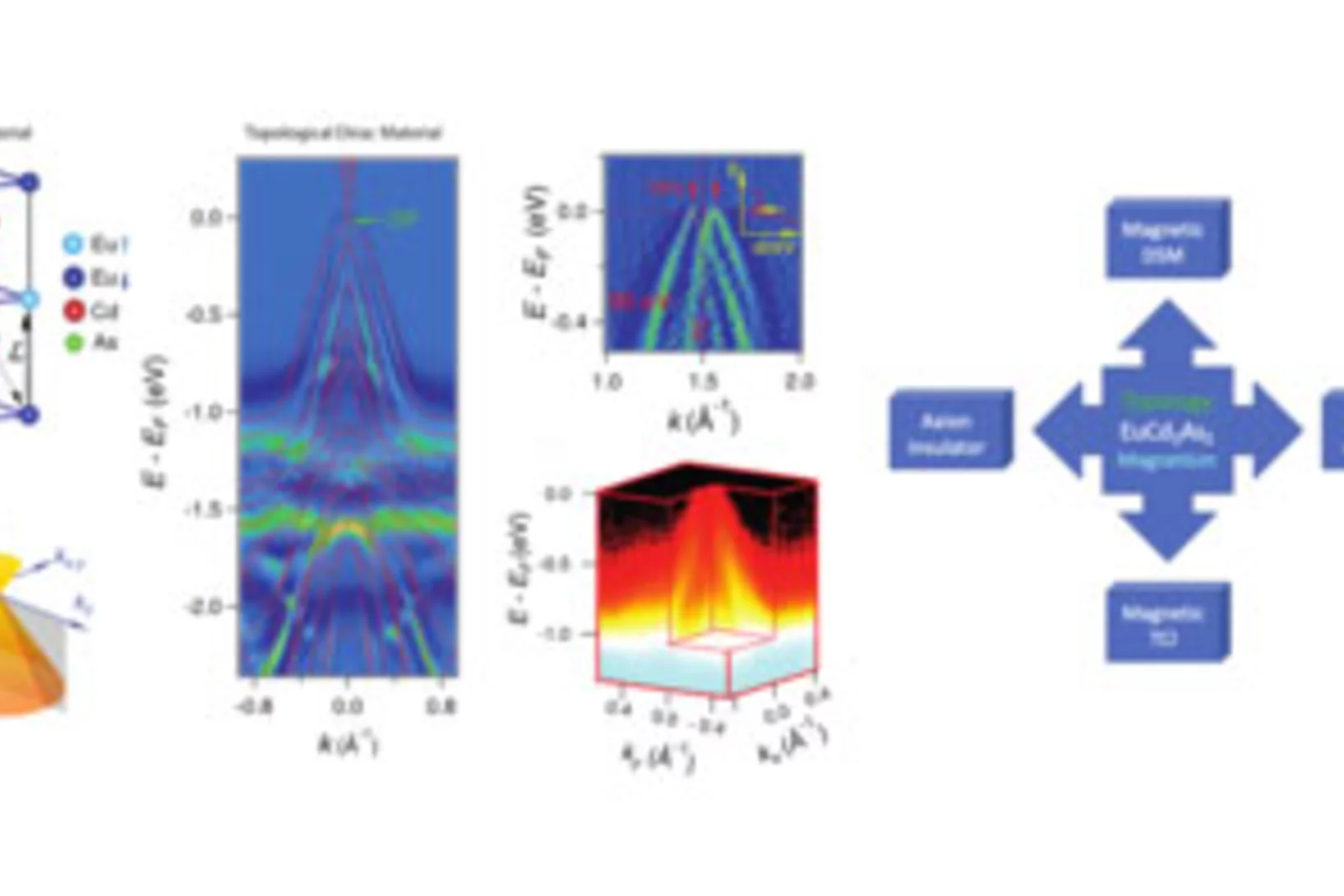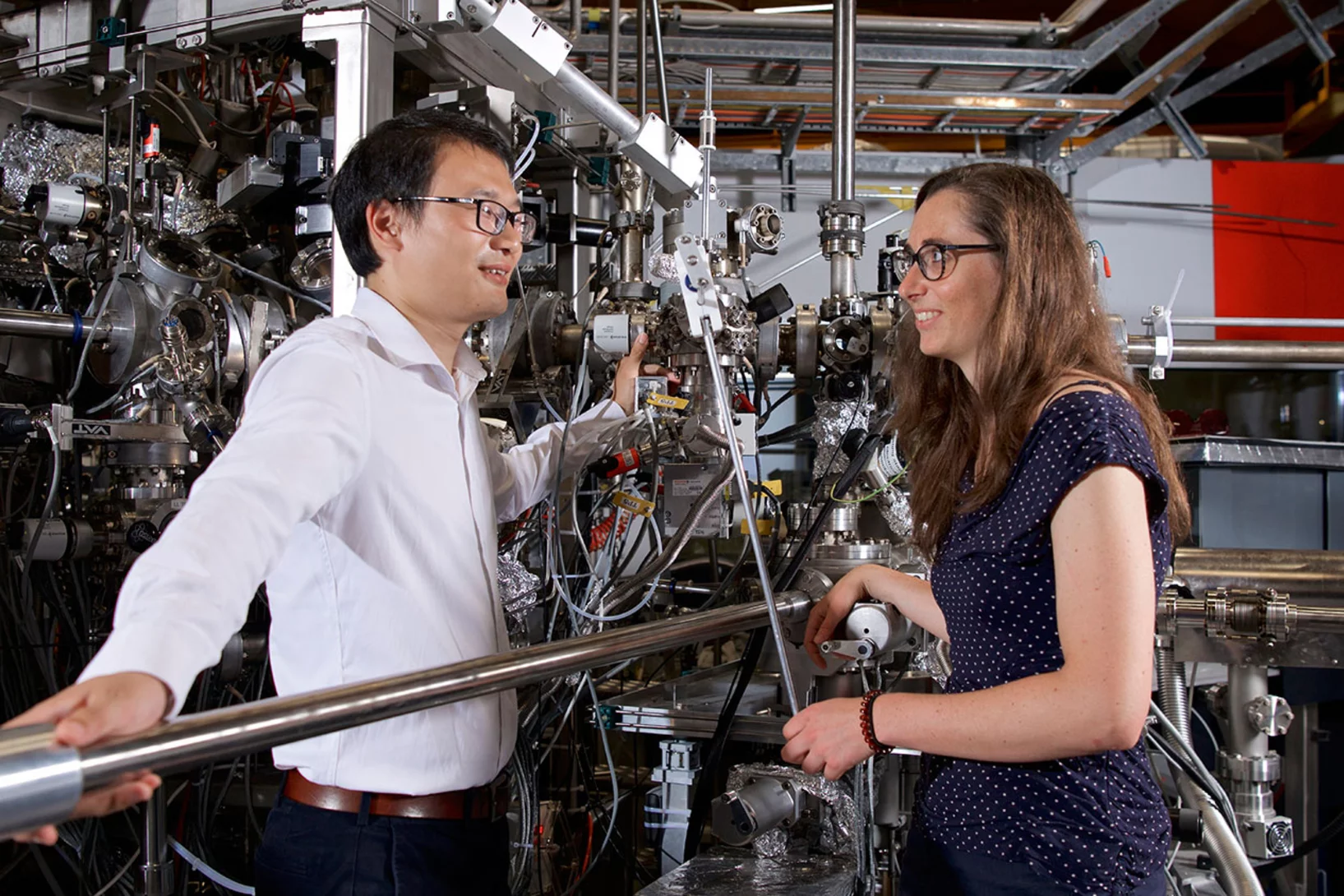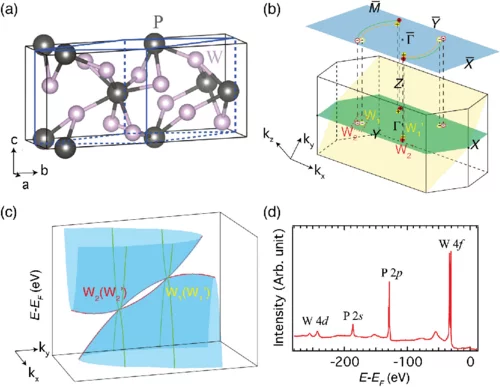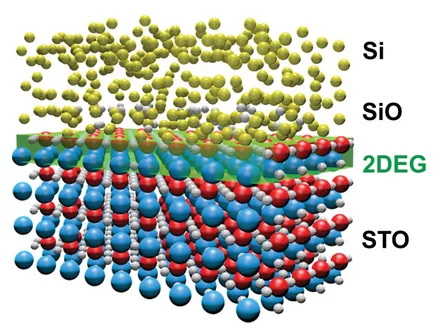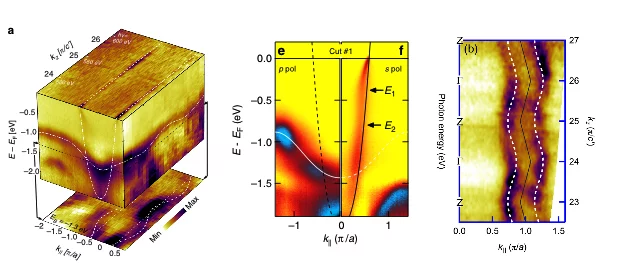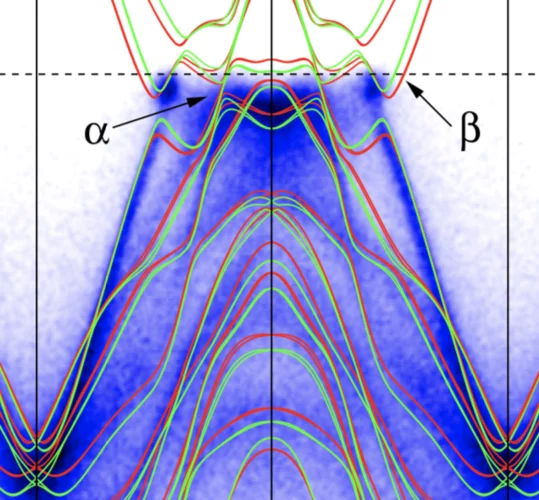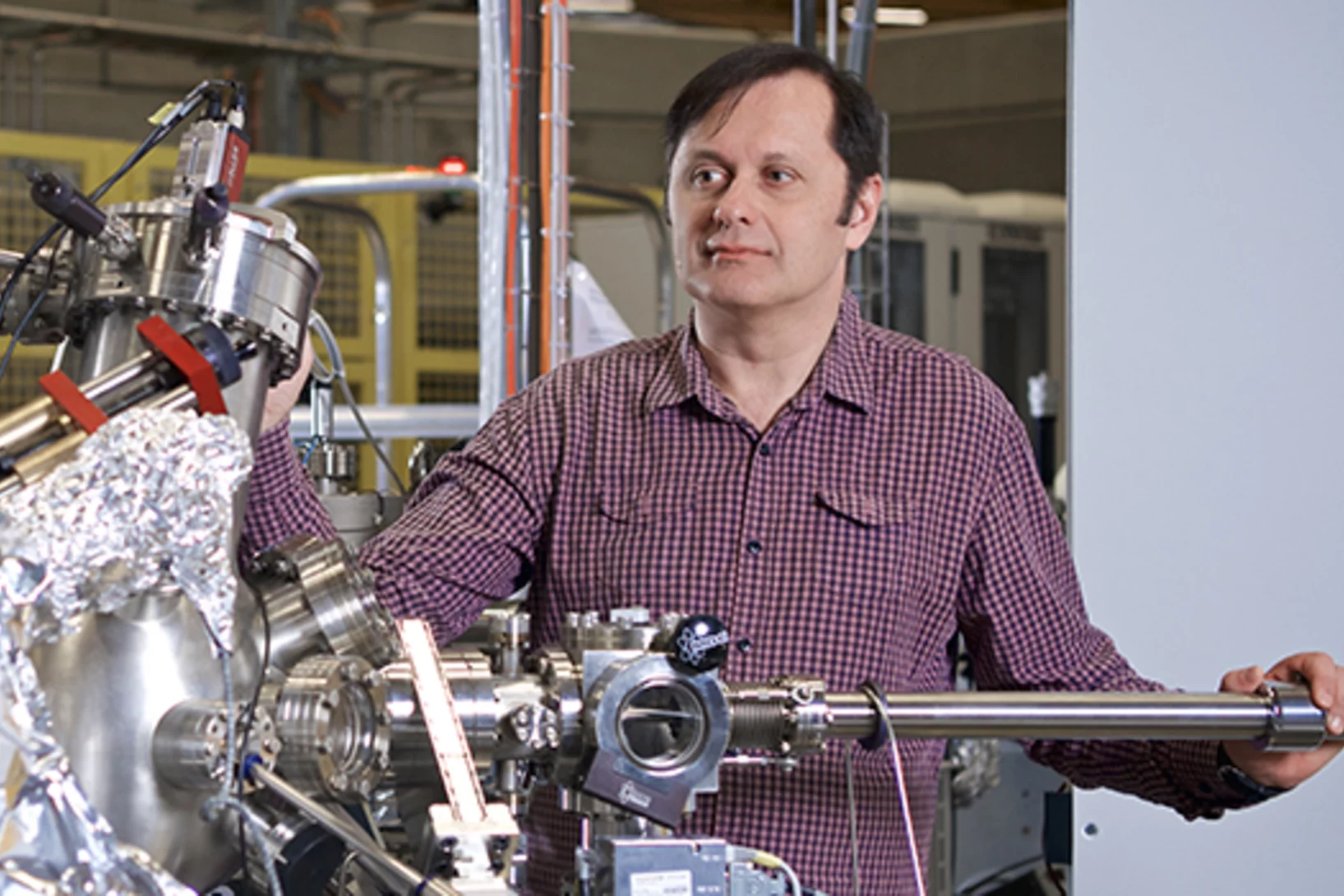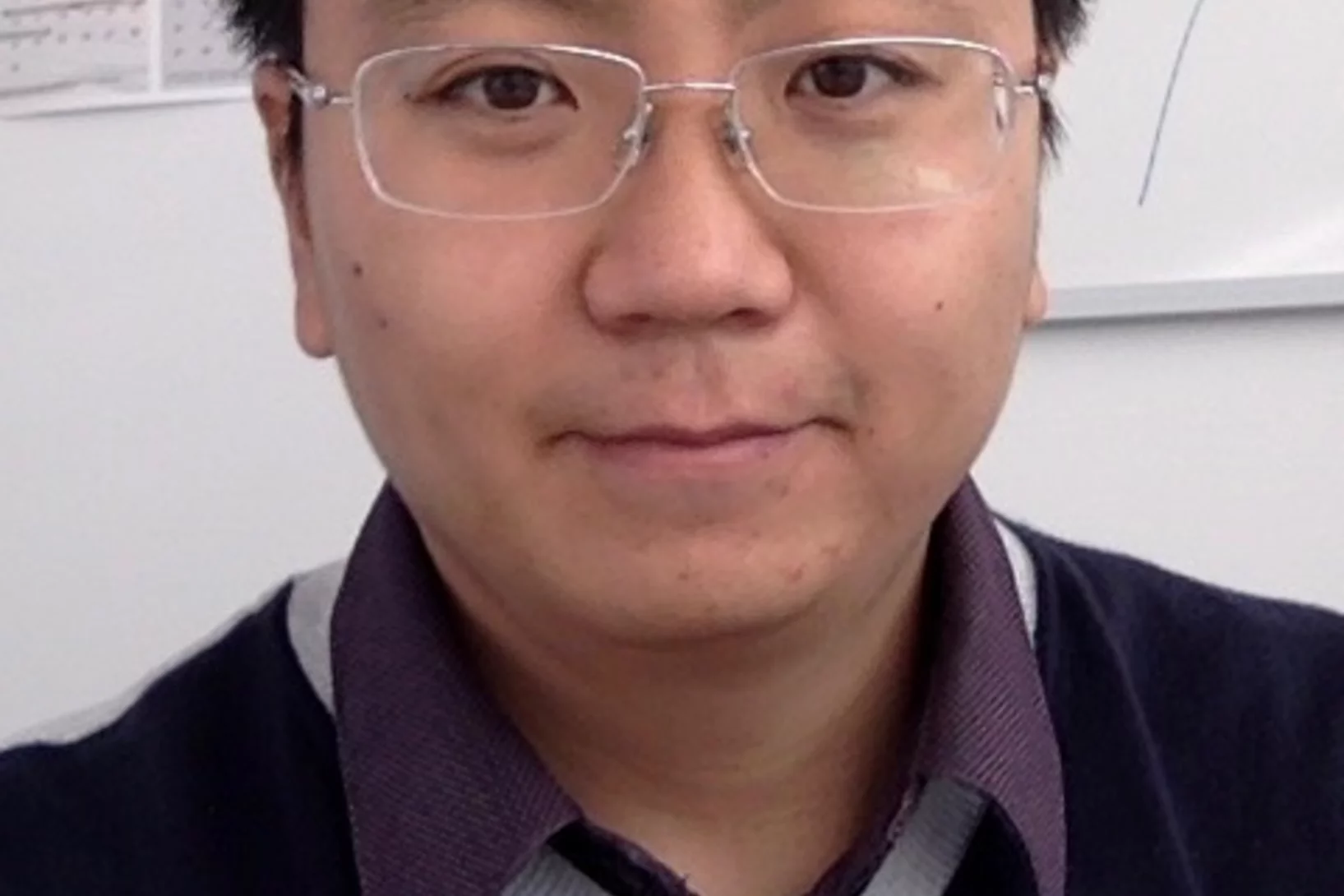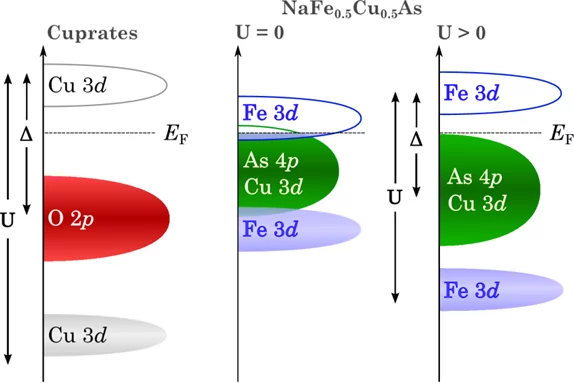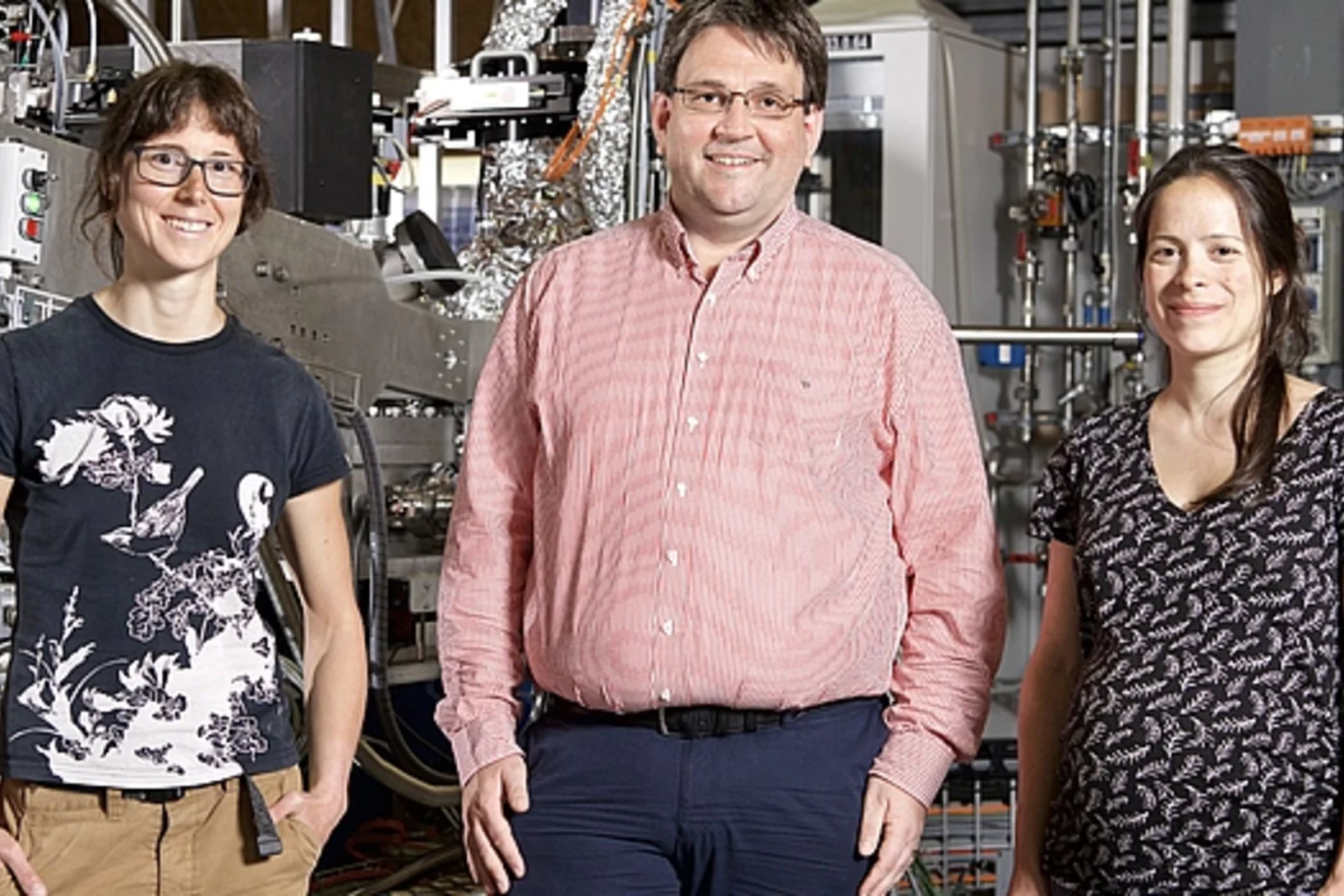Magnetismus in dünnen Schichten: Ein Elektron macht den Unterschied
Ein wichtiger Schritt zu neuartigen Computerspeichern
Phonon promoted charge density wave in topological kagome metal ScV6Sn6
Charge density wave (CDW) orders in vanadium-based kagome metals have recently received tremendous attention, yet their origin remains a topic of debate. The discovery of ScV6Sn6, a bilayer kagome metal featuring an intriguing √3 × √3 × √3 CDW order, offers a novel platform to explore the underlying mechanism behind the unconventional CDW. Here we combine ...
Weyl spin-momentum locking in a chiral topological semimetal
Spin–orbit coupling in noncentrosymmetric crystals leads to spin–momentum locking – a directional relationship between an electron’s spin angular momentum and its linear momentum. Isotropic orthogonal Rashba spin–momentum locking has been studied for decades, while its counterpart, isotropic parallel Weyl spin–momentum locking has remained elusive in experiments. Theory predicts ...
Unveiling ultra-thin electron liquids in silicon
Soft X-rays enable scientists to visualise non-invasively the electronic properties of ultra-thin dopant layers buried within semiconductor wafers.
Neue Materialien für den Computer der Zukunft
Forschende identifizieren und untersuchen Materialverbindungen, deren spezielle Eigenschaften neuartige Mikrochips möglich machen könnten.
Spin keeps electrons in line in iron-based superconductor
Electronic nematicity, thought to be an ingredient in high temperature superconductivity, is primarily spin driven in FeSe finds a study in Nature Physics.
New SwissFEL soft X-ray endstation welcomes first users
Maloja is go. First user experiments mark a double first, not only for the Maloja endstation but also for the second beamline of SwissFEL, Athos.
Rich electronic features of a kagome superconductor
Spectroscopic insights into the electronic structure of a family of kagome metals bolsters understanding of exotic quantum phenomena
Mobile excitons as neutral information carriers
These quasiparticles have the potential to revolutionise electronics - if they can move. Mobile excitons have now been observed for the first time in a metal.
Mit Topologie zu kompakteren Quantencomputern
Auf dem Weg zu besonders stabilen Quantenbits haben Forschende die Elektronenverteilung in zwei Halbleitern genau untersucht.
Halbleiter erreichen die Quantenwelt
Mit einem Supraleiter aufgemotzt: Die Halbleitertechnologie könnte eine neue Wendung erhalten, indem Quanteneffekte in Supraleitern ausgenutzt werden.
Das Praktische im Aussergewöhnlichen
Niels Schröter erhält einen Preis der Schweizerischen Physikalischen Gesellschaft SPG.
Creating novel quantum phases via the heterostructure engineering
Within this synergetic collaboration, PSI scientists have investigated the correlation between magnetic and electronic ordering in NdNiO3 by tuning its properties through proximity to a ferromagnetic manganite layer. The main outcome is that the stray magnetic field from the manganite layer causes a novel ferromagnetic-metallic (FM-M) phase in NNO. This work demonstrates the utilization of heterostructure engineering for creating novel quantum phases.
Die Physik in neuen Metallen verstehen
Forschende des PSI könnten gemeinsam mit internationalen Kollegen nun korrelierte Metalle für die Anwendung in der Supraleitung, Datenverarbeitung oder in Quantencomputern nutzbar gemacht haben.
Ein elektronisches Material massschneidern
Forschende am PSI haben ein Material untersucht, das sich für zukünftige Anwendungen in der Datenspeicherung eignen könnte. Mit einem Trick haben sie die Kristallstruktur ihrer Probe gezielt verzerrt und dabei vermessen, wie dies die magnetischen und elektronischen Eigenschaften beeinflusst.
Cherned up to the maximum
In topological materials, electrons can display behaviour that is fundamentally different from that in ‘conventional’ matter, and the magnitude of many such ‘exotic’ phenomena is directly proportional to an entity known as the Chern number. New experiments establish for the first time that the theoretically predicted maximum Chern number can be reached — and controlled — in a real material.
Emergence of Nontrivial Low-Energy Dirac Fermions in Antiferromagnet EuCd2As2
When magnetism meets topology, colorful novel states can emerge in condensed matter. It is widely believed that parity-time symmetry plays an essential role for the formation of Dirac states in Dirac semimetals. So far, all of the experimentally identified topological nontrivial Dirac semimetals possess both parity and time reversal symmetry. Since the magnetism will break time-reversal symmetry, only in special cases the Dirac states can be protected in a magnetic system. Thus, the realization of magnetic topological Dirac materials remains a major issue in the research of topological physics. In this work, the authors ascertained that the ground state of EuCd2As2 is a good candidate for magnetic topological Dirac semimetal when the spins point in the out-of-plane direction in the A-type antiferromagnetic phase. The Dirac state is protected by the combination of parity-time symmetry with additional translation operation. Moreover, when the spins deviate from out-of-plane direction, the bulk Dirac cone will open a gap, and the system develops into a novel state containing axion insulator, antiferromagnetic topological crystalline insulator, and higher order topological insulator.
Weyl-Fermionen in einer weiteren Materialklasse entdeckt
Eine besondere Art von Teilchen, sogenannte Weyl-Fermionen, waren bislang nur in bestimmten nicht-magnetischen Materialien gefunden worden. Jetzt aber haben PSI-Forschende sie erstmals auch in einem besonderen paramagnetischen Material experimentell nachgewiesen.
Neuartiges Material zeigt auch neue Quasiteilchen
Forschende des PSI haben an der Synchrotron Lichtquelle Schweiz SLS ein neuartiges kristallines Material untersucht, das bislang nie gesehene elektronische Eigenschaften zeigt. Unter anderem konnten sie eine neue Sorte Quasiteilchen nachweisen: sogenannte Rarita-Schwinger-Fermionen.
New study gives compelling evidence that tungsten diphosphide is a type-II Weyl semimetal
Researchers at NCCR MARVEL have combined first principles calculations with soft X-ray angle-resolved photoemission spectroscopy to examine tungsten diphosphide’s electronic structure, characterizing its Weyl nodes for the very first time. In agreement with density functional theory calculations, the results revealed two pairs of Weyl nodes lying at different binding energies. The observation of the Weyl nodes, as well as the tilted cone-like dispersions in the vicinity of the nodal points, provides compelling evidence that the material is a robust type-II Weyl semimetal with broken Lorentz invariance. This is as MARVEL researchers predicted two years ago. The research has been published in Physical Review Letters as an Editor's Suggestion.
X‐Ray Writing of Metallic Conductivity and Oxygen Vacancies at Silicon/SrTiO3 Interfaces
Lithography‐like writing of conducting regions at the interface between SrTiO3 and amorphous Si using X‐ray irradiation opens ways for spatially controlled functionalities in oxide heterostructures.
Elektronen zuschauen und Bits anknipsen
Kleiner, schneller und vor allem energieeffizienter soll die Elektronik werden. Auch in mehreren Forschungsgruppen am PSI sind diese Themen präsent. Von schrittweisen Verbesserungen bis zum kompletten Umdenken – wer tüftelt derzeit woran?
Cuprate Trilogy
In a trio of recent papers, a research group from the University of Zürich has made a number of new discoveries about the nature of cuprates' electronic structure and orbital composition. The results have important implications for superconductivity and pseudogaps in cuprates, and even the existence of type-II Dirac fermions in oxides.
Evidence of a Coulomb-Interaction-Induced Lifshitz Transition and Robust Hybrid Weyl Semimetal in Td-MoTe2
Using soft x-ray angle-resolved photoemission spectroscopy we probed the bulk electronic structure of Td-MoTe2. We found that on-site Coulomb interaction leads to a Lifshitz transition, which is essential for a precise description of the electronic structure. A hybrid Weyl semimetal state with a pair of energy bands touching at both type-I and type-II Weyl nodes is indicated by comparing the experimental data with theoretical calculations.
Auf dem Weg zu neuen Leistungstransistoren
Von einem neuartigen Leistungstransistor aus Galliumnitrid verspricht sich die Elektronikindustrie erhebliche Vorteile gegenüber derzeit eingesetzten Hochfrequenztransistoren. Doch noch sind eine Vielzahl grundlegender Eigenschaften des Materials unbekannt. Forschende am Paul Scherrer Institut PSI haben nun erstmals den Elektronen im angesagten Transistor beim Fliessen zugeschaut. Sie nutzten dafür eine der weltweit besten Quellen für weiches Röntgenlicht an der Synchrotron Lichtquelle Schweiz des PSI.
Dr. Nan Xu awarded SPS 2017 Prize in Condensed Matter Physics
The SPS 2017 Prize in Condensed Matter Physics, sponsored by IBM, has been awarded to Dr. Nan Xu for his excellent work on topological quantum states. Dr. Nan Xu is a joint postdoc of Paul Scherrer Institute (PSI) and the École Polytechnique Fédérale de Lausanne (EPFL).
Realization of a combined band-Mott insulator
For decades, the mechanism of Mott phase in Ca2RuO4 has puzzled researchers. This material is a paradigmatic case of multi-band Mott physics including spin-orbit and Hund's coupling. Progress has been impeded by the lack of knowledge about the low-energy electronic structure. With our recent contribution, we provided-- using angle-resolved photoemission electron spectroscopy -- the band structure of the paramagnetic insulating phase of Ca2RuO4.
Better graphene nanoribbons for electronics applications
Turning the semimetal graphene into a technologically useful semiconductor is challenging. One way of opening a band gap is to cut graphene into nanometre-wide ribbons, but even atomic-level roughness at the ribbon edges can seriously degrade the mobility of charge carriers. Recent advances in on-surface chemistry have made it possible to obtain graphene nanoribbons with atomically precise edges through direct synthesis from molecular building blocks. Here, we report the synthesis, full structural and electronic characterization of 9-atom wide graphene nanoribbons with significantly improved electronic properties.
Novel insulating phase in iron-pnictide materials
The first example of an insulating phase which is close to the superconducting phase in an iron-pnictide system has been recently observed in heavy Cu-doped NaFe1-xCuxAs (x > 0.3). A combined study by angle-resolved photoemission spectroscopy (ARPES) and density functional theory (DFT) calculations revealed that on-site Coulomb repulsion and enhanced Hund’s rule coupling are responsible for the insulating behavior. The results show that the insulating phase in NaFe0.5Cu0.5As resembles the situation in the parent compounds of the high-Tc cuprate superconductors.
Wahlweise elektrisch leitend oder isolierend
Das Material Neodym-Nickel-Oxid ist je nach seiner Temperatur entweder ein Metall oder ein Isolator. Die Möglichkeit, diesen Übergang elektrisch zu steuern, macht das Material zu einem möglichen Kandidaten für Transistoren in modernen elektronischen Geräten. Mittels einer ausgeklügelten Weiterentwicklung der Röntgenstreuung konnten Forschende am Paul Scherrer Institut PSI nun die Ursache dieses Übergangs nachvollziehen: Rund um die Sauerstoffatome sortieren sich die Elektronen um.

